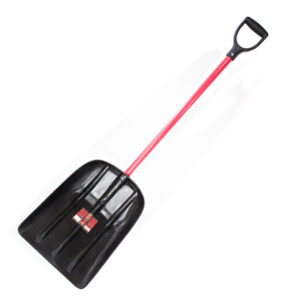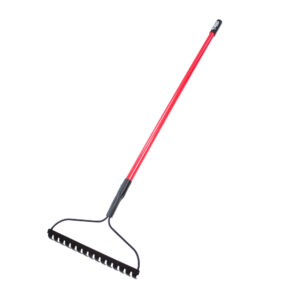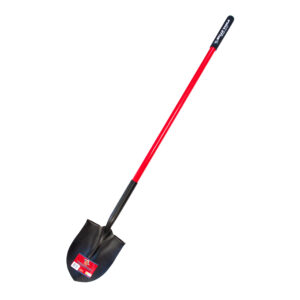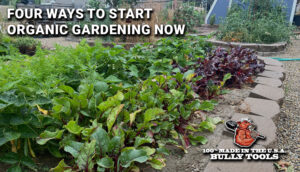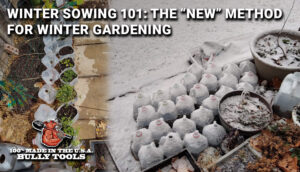5 Ways to Make Your Garden More Water-wise

All plants need sun, water, and nutrients in varying quantities. While plant tags or seed packets will tell us how much sun a plant needs, they don’t always tell us about how much water they need. Why not? One reason is that the climate across the U.S. varies extensively. While the eastern states have regular rain and humidity, there are large swaths of the western states that receive less than 12 inches of water per year and rely on irrigation. It’s hard to tell a gardener in a small plant tag how much supplemental water is needed without knowing the average rainfall first.
Unfortunately, supplemental watering lawn and garden can be expensive, and may not be possible in the middle of drought. But there’s a solution, and it’s called “water-wise gardening” or “xeriscaping.” Xeric is a term often associated with cactus and rocks, when in reality it means gardening that uses less water—or being water-wise in dry landscapes. While xeriscaping is popular in the arid desert southwest and high desert western states, it isn’t the same as zero maintenance landscaping. With the right plants, you can be water-wise and still create a beautiful garden.
The principles of water-wise gardening are simple and will be explained in further detail:
- Use plants best suited for your soil type and climate, and use best care practices.
- Group together plants with similar light and water requirements, and place them in an area that matches these requirements. Zone turf area irrigation separately from other plants.
- Use mulch to keep plant roots cool, minimize evaporation, and reduce weed growth.
- Limit the amount of turf in your yard or use alternative grasses.
- Use the irrigation method that waters the plants in each area most efficiently.
Beyond just cost savings, the benefits of water-wise gardening ultimately lead to healthier plants that are easier to maintain and nurtures a better garden ecosystem.
1. Choose the Best Plants for Your Climate
If you’ve read the articles “Problem Solving: When Plants Don’t Behave the Way You Want” or “Four Ways to Start Organic Gardening Now” then you already know how important it is to plant what’s best suited to your climate and soil. By using plants native to your area, you already know they will perform well in your landscape without supplemental water.
Consult local reputable nurseries for suggestions. There are many online sources for information about native perennials, shrubs, trees, and annuals for your area and where to purchase them. By choosing plants that are best suited for the soil, sun, and water conditions in your garden, they are more likely to thrive.
The pictured plants are grouped in a garden bed (the xeric zone referenced in the next section) and are drought tolerant enough to only need irrigation twice per month during the summer (once established; assuming little summer rain, which is typical for this area; arid high desert zone 6b).
2. Group and Zone Plants Appropriately
Believe it or not, there are plants that sulk with too much water. When you create water use zones, they increase water efficiency because you are only watering all the plants in that zone as much as they need and not more—the result is happier plants because you reduce under and over-watering.
Create zones by grouping plants with like water and sun requirements. For example, roses and petunias have high water demands during the summer, whereas yarrow and Russian sage only need a deep soak a few times a month in desert climates.
There are basically three types of water use zones:
- The oasis (moist) zone is usually the same water schedule as your lawn and is where the more water-intensive plants are grouped. Typically this is close to the house where water is more accessible and plants are protected from sun and wind. Gardeners who prefer xeric will often do without this zone.
- The transition (semi-moist) zones are areas typically around driveways, fences, and walkways that are visible as you approach the house. This is a good place to include shade trees, ornamental grasses, and native turf grass lawns.
- The xeric (drought tolerant) zone is the area furthest from the property, including out of the way areas that may not be used or seen often. Most xeric plants, once established (usually after two seasons of frequent watering in order to build the root system and acclimatize the plant) can be deeply watered 1-2x a month (in desert climates).
Certainly it takes a lot of planning to zone properly, because you have to consider the needs and placement of each plant. It’s even more work if you’re changing up an established garden. The long-term benefits, however, are worth it because it makes irrigation more efficient and predictable.
3. Use Mulch
‘Mulch’ refers to any material laid over a soil surface, such as bark, pine needles, shredded leaves, or compostable materials such as newspaper or cardboard. Mulch is used for a number of reasons, including aesthetics, weed suppression, plant protection, addition of nutrients to the soil, and preventing soil erosion or compaction. When considering water-wise practices, mulch is also extremely useful for:
- retaining soil moisture because it slows evaporation
- offers less competition from weeds for water
- helps maintain optimal soil temperature by creating a barrier from heat and cold
Mulches should be refreshed as needed (not necessarily every year), whether completely replacing or spreading a new layer on top of an existing layer. A variety of materials make excellent mulch:
- Bark—Best around trees, shrubs, and in garden beds where there will be minimal digging. It works well for walkways. Bark lasts longer than other organic mulches and makes the garden look tidy.
- Pine Needles/Pine Straw—Good for suppressing weeds and keeping moisture in the soil. They can be useful for spreading around strawberries if you’re having trouble with slugs or snails. They only slightly acidify the soil, if that’s a concern.
- Shredded Leaves—If you aren’t already adding leaves to your compost pile, they are used as protective mulch in the fall around more tender perennials. Shredded leaves can be used as a direct compost onto vegetable beds or in the flowerbeds in the fall.
- Straw/Salt Hay—Great for vegetable gardens because they prevent soil plash on leaves and protect pathways.
- Compost—Some composts look better than others, but many wood-based composts look like finely shredded bark mulch. Whether you’re using purchased compost or using your own, the benefit of using a thick layer of compost adds nutrients the vegetable and garden beds and protect soil temperatures.
- Grass Clippings—Excellent for suppressing weeds in remote areas of the garden. Because they have a high water content, they can grow smelly/slimy as they decompose and become a dense mat, so aren’t recommended for garden beds.
- Newspaper/Cardboard—Most newspapers/cardboard black inks today are soy-based with hydrogen peroxide used for bleaching pulp, making them safe for garden use (avoid colored or glossy inks). Both, when thickly laid, hold moisture well and are great for smothering grass or weeds. They can be covered with another mulch such as bark because they will decompose into the soil over only a few seasons.
While non-biodegradable mulches such as rocks or landscape fabric are popular, neither are recommend except in pathways or along house foundations prone to termites.
Pictured in this new edging bed, cardboard was used to suppress the weeds; mulch was spread on top to help tidy the edges, further suppress weeds, and retain moisture. These groundcover shrubs are the highly drought tolerant Low-grow Sumac (Rhus aromatica), which has a white spring blossom and only requires twice-monthly (or less) irrigation (once established).
4. Limit Turf Areas or Use Native Grasses
Many homeowners choose to grow large turf areas because they are lower maintenance. Unfortunately there are pitfalls: furf uses more water, requires more fertilizer, and needs weekly maintenance. Compare that to garden beds filled with native flowers, shrubs, and trees, which if chosen appropriately, only need supplemental water when it’s dry, and often only require pruning maintenance a couple of times a year. Native plants also need less fertilizer. The biggest benefit is an unexpected one: grasslands (not to be confused with lawns) are excellent CO2 sinks, maybe even better than trees in some ways.
The idea here is to only have turf where necessary and leave the rest of the yard to gardens to other landscaping. If you can’t completely remove turf areas, then limit to only where it’s needed, such as play spaces for children.
If you want a turf area that requires less water, consider using native grasses or drought tolerant grasses. It’s useful to ask local reputable nurseries for suggestions. There are many online sources for information about the native grasses best for your area and where to purchase them.
This lawn uses RTF (rhizomatous tall fescue), which in this arid high desert garden (<10” annual rainfall) requires irrigation less than once per week in the hottest days of summer (irrigation doesn’t begin until May, with 10-14 day cycles in cooler weather depending on rainfall). The ratio in this garden is ¼ turf to ¾ landscaping/beds/walkways and the result is considerably less water use than the average yard because the non-turf plantings are also considered drought tolerant.
5. Irrigate Efficiently
In areas where rainfall is less dependable, or in times of drought, there are a few important concepts to irrigating in a water-wise fashion:
- Water deeply and infrequently—When watering, regularly check soil when watering to make sure it’s soaking deeper than the very top of the soil and adjust water times and frequency when necessary.
- Water directly at the base of the plant—Consider putting in soaker hoses or drip irrigation. Soaker hoses are easily covered with mulch or buried in the soil next to your plants. These methods deliver water directly to the base of the plant and reduce evaporation and waste from run-off or sprinklers running over non-planted areas. There are also some great sprinkler heads that deliver water more efficiently, so you may consider installing these in your current system.
- Water at the coolest time of the day in the summer—During the summer, it’s best to water before noon or in the evening when the air temperature is at its coolest.
- Know the water requirements for your plants— It’s good management practice to be aware of your plants’ water requirements. For example, did you know that lilac, peony, yarrow, and salvia are all plants that grow fine on less water? In fact, some plants like yarrow look better with less!
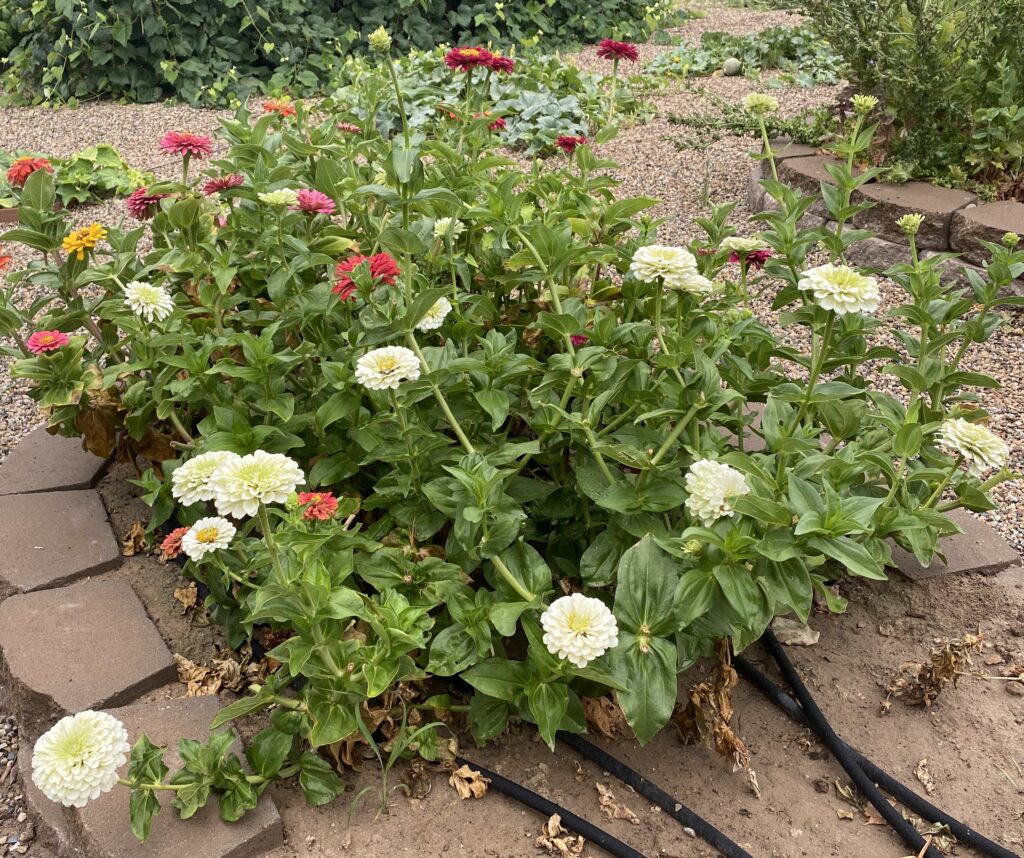
Often you can learn more about best watering practices from your county’s extension office.
Water-wise = Smarter Gardening
Whether you implement one of these methods or all five, the results are worth it. Like with any gardening project there’s work involved, but when the end results mean an easier to maintain garden that’s also heathier, the trade-off is worth it.


